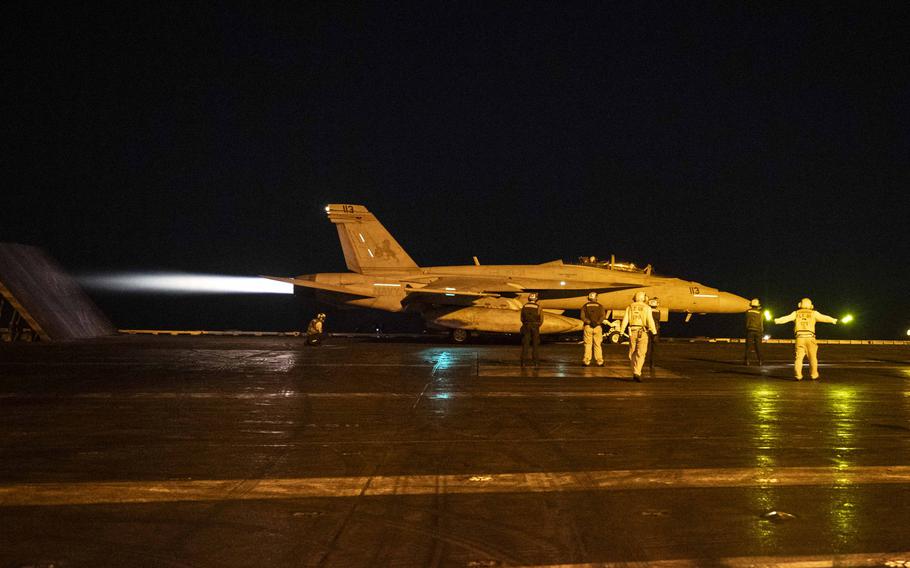
The Nimitz-class aircraft carrier USS Dwight D. Eisenhower (CVN 69) conducts flight operations in response to increased Iranian-backed Houthi malign behavior in the Red Sea, Feb. 23, 2024. The Dwight D. Eisenhower Carrier Strike Group is deployed to the U.S. 5th Fleet area of operations to support maritime security and stability in the Middle East region. (U.S. Navy)
U.S. coalition forces successfully destroyed two missiles and shot down a drone Saturday, in continuing clashes with Yemen-based Houthis.
U.S. Central Command announced Sunday its forces successfully destroyed a mobile surface-to-air missile in Yemen and shot down an unmanned aerial vehicle over the Red Sea between 10 a.m. and 3 p.m., Yemen time. Later that evening, a coalition vessel detected, successfully engaged and destroyed an inbound anti-ship missile.
No injuries or damage were reported by U.S., coalition or commercial ships, the CENTCOM statement said. CENTCOM did not identify any vessels that may have been targeted in these attacks.
“It was determined that these systems presented a threat to U.S. and coalition forces and merchant vessels in the region,” the statement said.
U.S. and U.K. forces in the Red Sea have continually struck the Iranian-backed Houthis at military targets in areas the group controls in Yemen and at missiles and drones launched at shipping in the Red Sea, a vital commercial waterway.
U.S. Navy vessels have been targeted repeatedly by the Houthis, either by drones or by close-range ballistic missiles. The destroyer USS Laboon, part of the group escorting the aircraft carrier USS Dwight D. Eisenhower, was unsuccessfully targeted March 12 by a missile; in January the destroyers USS Gravely in the Red Sea and the USS Carney in the Gulf of Aden were also targeted but downed both missiles.
Also Sunday, CENTCOM announced another airdrop of humanitarian aid into Gaza.
The joint operation with the Royal Jordanian Air Force included Jordanian-provided food and three U.S. Air Force C-130 aircraft. The U.S. C-130s dropped over 38,000 meal equivalents, providing lifesaving humanitarian assistance in Northern Gaza. To date the U.S. has dropped 739 tons of humanitarian assistance.
Last week, two U.S. military ships carrying the supplies needed to build a humanitarian aid corridor off Gaza’s shore moved closer to the eastern Mediterranean Sea.
Full operational capability of the dock and causeway is expected by the end of April or early May, matching the 60-day estimate announced in March, Maj. Gen. Pat Ryder, a spokesman for the Defense Department, told reporters Thursday at a Pentagon briefing.